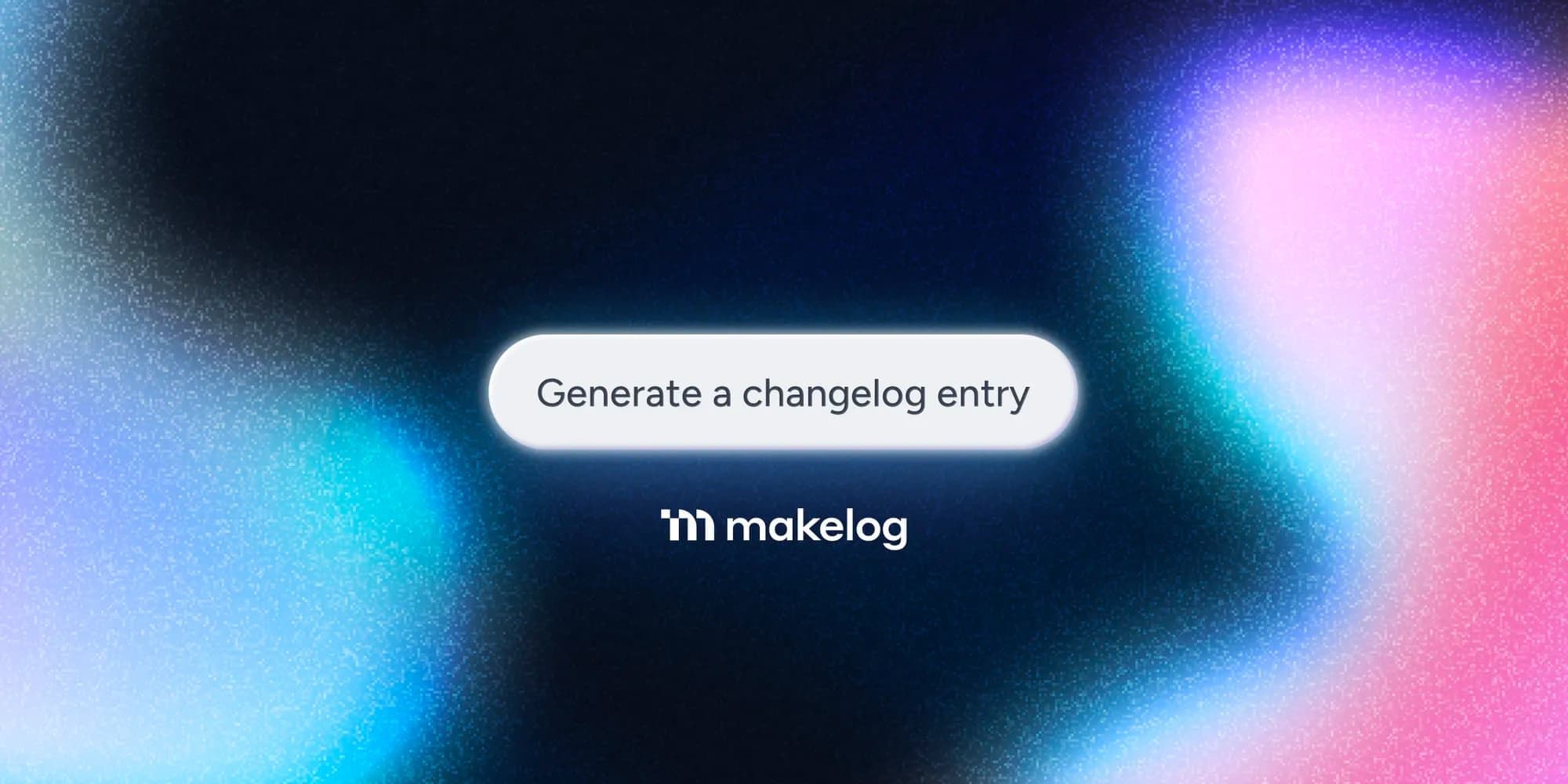Jumpstart Your Changelog with GPT-3
January 27, 2023 • Makelog Team

Today, we’re announcing a brand new feature in Makelog: the ability to automatically generate changelog posts using issues from tools like Linear, Jira, Shortcut, and more!
When we first heard about ChatGPT last year, we met it with a healthy dose of skepticism, particularly for the release communication use case: sure, GPT has come a long way, but will it ever be good enough to totally eliminate the labor of love that is writing effective product updates? Or is that just wishful thinking on behalf of PMs everywhere?
After exploring the tool, we realized, maybe it doesn’t have to eliminate the task at all. Maybe it’s enough just to accelerate writing product updates that strike the right blend of technical, contextful, and… ironically, human.
In fact, the more we played with it, the more we realized the critical role it could play in bringing about our vision for continuous communication.
Close the gap between feature shipped and feature communicated
One of Makelog’s hallmark features is our integration with tools like GitHub, Jira, and Linear. From the very beginning, our hypothesis was that product teams already captured a ton of context in their issues that could be easily automated into customer-facing communications.
This would shrink the gap between when code is deployed to when new features get into customers’ hands and, ultimately, when customers actually get value from those features.
The faster you can create engaging, effective product updates for sales and success teams to share with customers, the smaller that gap is.
Reduce manual toil
In Q4, we ran a market survey among B2B PMs to understand what was hardest about sharing updates internally and externally, and 74% of participants said some version of the following:
Another 15% of participants mentioned it’s a struggle to find the time to even do it, or that it’s hard to prioritize it. That’s because, with softer things like communication, you can’t easily measure the impact, so PMs aren’t always incentivized to invest much time here.
With the amount of manual toil required to write good updates and no clear way to even measure their impact, product updates easily devolve into the work equivalent of flossing for many PMs.
AI-assisted changelog entries means you no longer need to start from scratch when writing an update. You simply need to define what’s shipping and let GPT-3 do the rest.
Get the right update to the right person at the right time
GPT-3 also has the potential to create updates tailored to specific audiences. One of the biggest challenges with communicating effectively is that “effective” means something different to different stakeholders.
What makes this even more complex is that organizations often have multiple goals for their changelog:
Given the right context, GPT-3 can help generate multiple versions of the same update (tailored appropriately to the right audience), giving PMs superpowers to not only share updates in general faster, but share more effective updates faster.
What’s next
We don’t believe AI will replace the release notes writing task entirely anytime soon.
But we do believe that its power to supercharge the process, combined with our existing workflow automation features, can dramatically reduce the communication overhead that plagues modern software teams today.
Check out our changelog generator tool at makelog.com/gpt3 and sign up for our waitlist to be the first to hear when it’s available!